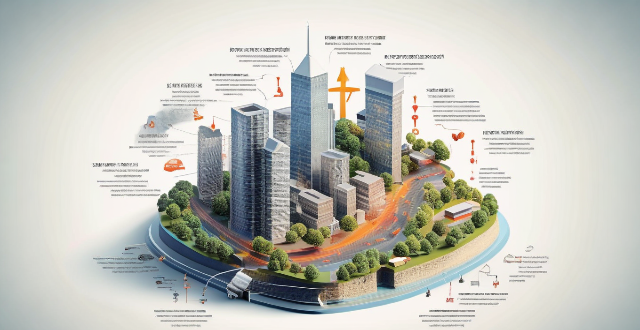Climate adaptation strategies are actions taken to adjust to climate change impacts, aiming to reduce vulnerability and increase resilience. Examples include infrastructure improvements like flood protection systems, land use planning such as coastal zoning, adopting drought-resistant crops in agriculture, establishing heatwave early warning systems for health, investing in renewable energy sources, community engagement through public awareness campaigns, ecosystem conservation measures like wetland restoration, urban planning initiatives like green infrastructure, financial mechanisms including insurance schemes, and policy updates such as climate adaptation plans. These strategies are context-specific and often work best in combination, aiming to build a flexible and responsive society capable of addressing climate change challenges.

Examples of Climate Adaptation Strategies
Climate adaptation strategies refer to the actions taken to adjust to the expected or current impacts of climate change. These strategies aim to reduce vulnerability, increase resilience, and take advantage of new opportunities that may arise from a changing climate. Here are some examples of climate adaptation strategies:
1. Infrastructure Improvement
- Flood Protection Systems: Building sea walls, levees, and drainage systems to protect against rising sea levels and extreme weather events like floods.
- Water Management: Implementing more efficient irrigation systems, water storage facilities, and recycling programs to cope with changes in precipitation patterns and droughts.
2. Land Use Planning
- Coastal Zoning: Restricting development in vulnerable coastal areas through zoning regulations to minimize exposure to storm surges and sea level rise.
- Afforestation and Reforestation: Planting trees and restoring forests to enhance carbon sequestration and improve soil quality, reducing the risk of landslides.
3. Agricultural Practices
- Drought-Resistant Crops: Developing and cultivating crops that can withstand longer periods without water.
- Crop Rotation: Rotating crops to maintain soil health and adapt to changing temperature and rainfall patterns.
4. Health and Well-being
- Heatwave Early Warning Systems: Establishing systems to alert the public about upcoming heatwaves so they can take protective measures.
- Disease Surveillance: Monitoring the spread of diseases carried by insects or water that might expand into new regions due to climate change.
5. Energy Sector Adaptation
- Renewable Energy Sources: Investing in wind, solar, and hydroelectric power to reduce dependence on fossil fuels and decrease vulnerability to price fluctuations.
- Energy Efficiency Measures: Improving energy efficiency in buildings and industry to lower demand during peak times and reduce strain on the grid during heat waves.
6. Community Engagement and Education
- Public Awareness Campaigns: Educating the public on how to prepare for and respond to climate-related risks.
- Community-Based Adaptation: Engaging local communities in adaptation planning to ensure solutions are culturally appropriate and effective.
7. Ecosystem Conservation
- Protected Areas: Designating certain areas as protected to preserve biodiversity and ecosystem services that help buffer against climate change impacts.
- Restoration of Wetlands: Restoring wetlands to provide natural flood protection and support wildlife habitats.
8. Urban Planning
- Green Infrastructure: Developing green roofs, urban forests, and parks to manage stormwater runoff and provide cooling effects during hot weather.
- Cool Roofs and Pavements: Using reflective materials for roofing and paving to reduce urban heat island effect and save energy used for cooling.
9. Financial Mechanisms
- Insurance Schemes: Developing insurance products tailored for climate risks, such as flood or crop insurance, to provide financial protection against losses.
- Climate Funds: Establishing funds specifically aimed at financing adaptation projects that enhance resilience in vulnerable sectors.
10. Legislation and Policy
- Building Codes: Updating building codes to ensure new construction is resilient to climate impacts, such as stronger hurricane force winds.
- Climate Adaptation Plans: Creating government plans that outline strategies for adapting to climate change over the long term.
These strategies are not exclusive and often work best when combined. They require careful consideration of local conditions, resources, and the specific impacts of climate change on different regions and sectors. The goal is to create a society that is flexible, responsive, and capable of dealing with the challenges posed by a changing climate.